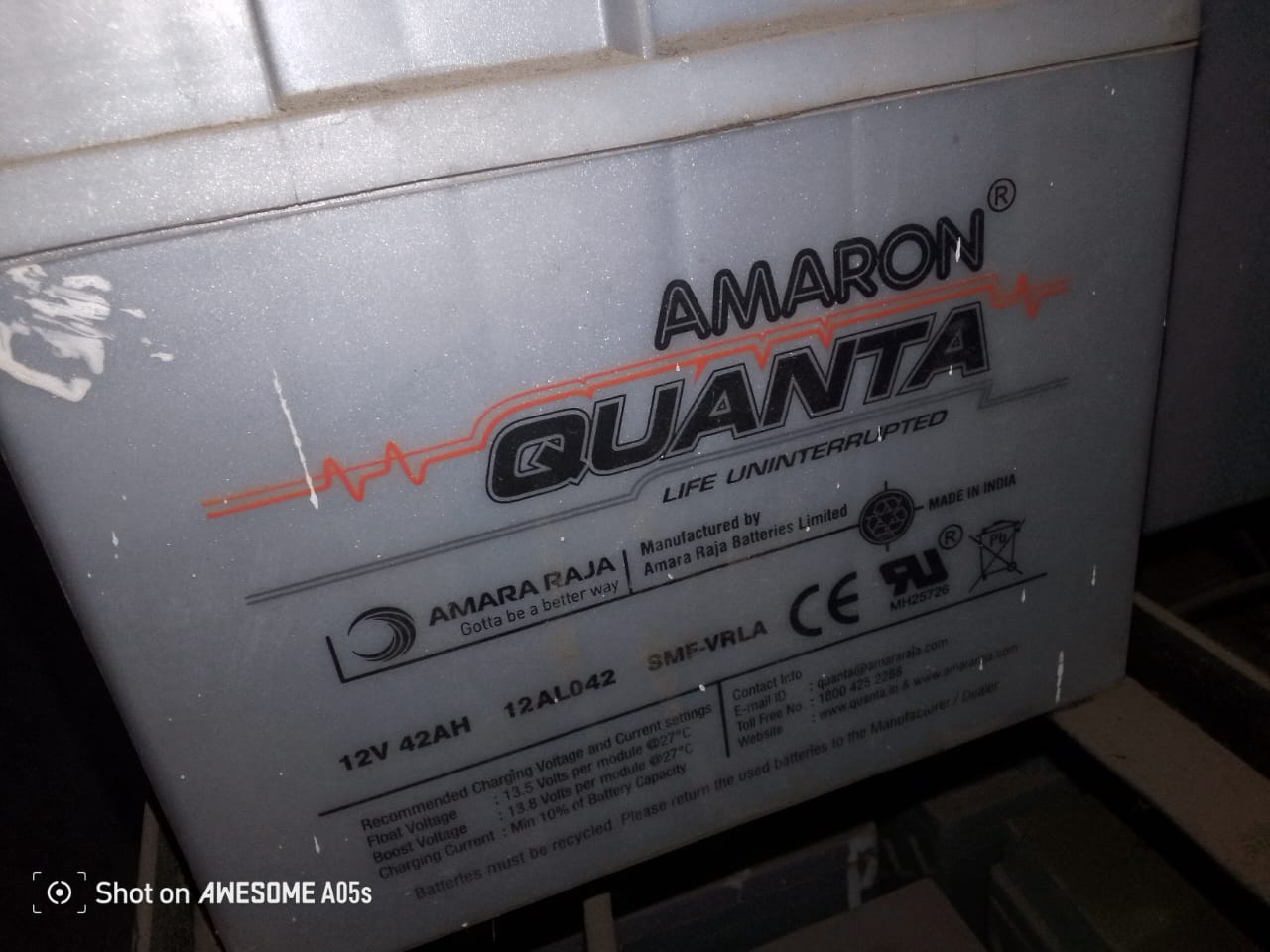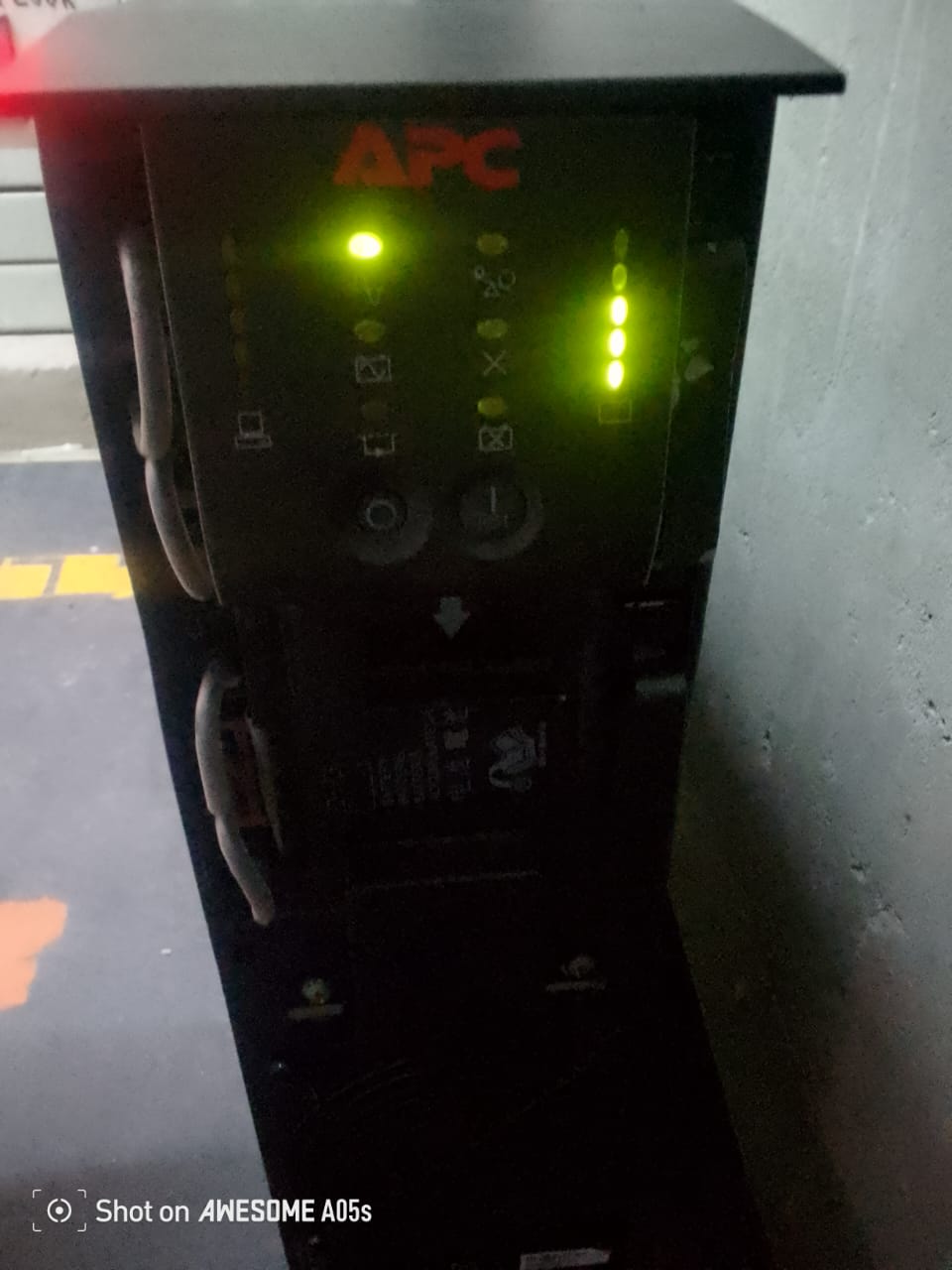The Amaron 12V 42Ah battery is commonly used in various uninterruptible power supply (UPS) systems, including those from Vertiv. When paired with a Vertiv 2 kVA UPS, it provides reliable backup power for critical applications. Below are the details regarding both the Amaron battery and its application in a Vertiv 2 kVA UPS system. Amaron 12V 42Ah Battery Type: Sealed Lead Acid (SLA) battery, specifically designed for deep cycle applications. Voltage: Nominal Voltage: 12 Volts. Capacity: Ah Rating: 42 Ampere-hours (Ah), which indicates the battery's capacity to deliver a specific current for a certain period. Dimensions: Size: Typically around 9.5 x 5.5 x 8.5 inches (L x W x H), but this can vary by manufacturer. Weight: Approximately 30-35 lbs (13-16 kg), depending on the specific model and manufacturer. Construction: Maintenance-Free: The sealed design prevents leakage and reduces maintenance requirements. Durability: Designed to withstand vibrations and shocks, making it suitable for various environments. Discharge Characteristics: Cycle Life: Can typically provide around 300-500 cycles at 100% discharge, depending on usage and maintenance. Operating Temperature: Generally operates efficiently within a temperature range of -15°C to 50°C (5°F to 122°F). Vertiv 2 kVA UPS Power Rating: Capacity: 2 kVA (2000 VA) / typically around 1.6 kW output, depending on the power factor. Topology: On-Line Double-Conversion: Provides continuous power with zero transfer time, ensuring maximum protection for connected equipment. Input Specifications: Input Voltage: Typically accepts 110-240 VAC. Input Frequency: 50/60 Hz (auto-sensing). Output Specifications: Output Voltage: Configurable, typically 220/230/240 VAC. Output Connections: Multiple IEC or NEMA outlets for connecting devices. Battery Compatibility: The 2 kVA UPS can be paired with multiple 12V batteries (like the Amaron 12V 42Ah) in series or parallel configurations to achieve the desired runtime and capacity. Management and Monitoring: LCD Display: Provides real-time information on UPS status, including input/output voltage, load level, battery status, and alarms. Communication Ports: Typically includes USB and RS-232 for management and monitoring. Some models may have SNMP options. Physical Dimensions: Size: Generally around 3U to 5U in height, depending on the specific model. Weight: Approximately 50-70 lbs (22-32 kg) for the UPS alone, excluding batteries. Applications The combination of the Amaron 12V 42Ah battery with a Vertiv 2 kVA UPS is ideal for protecting critical IT equipment, networking devices, and servers in small to medium-sized data centers, server rooms, and telecommunications environments. Summary The Amaron 12V 42Ah battery is a reliable choice for use in a Vertiv 2 kVA UPS, providing the necessary backup power to maintain operations during outages. The UPS offers advanced features like online double-conversion technology and real-time monitoring, ensuring that sensitive equipment remains protected. For the most accurate and specific details, including installation, configuration, and warranty information, it's advisable to refer to the official documentation from Vertiv and Amaron or consult with their respective representatives.
Send Message







